Leading with safety: In conversation with former NHTSA Administrator and Aurora Safety Advisory Board member, Dr. Jeff Runge
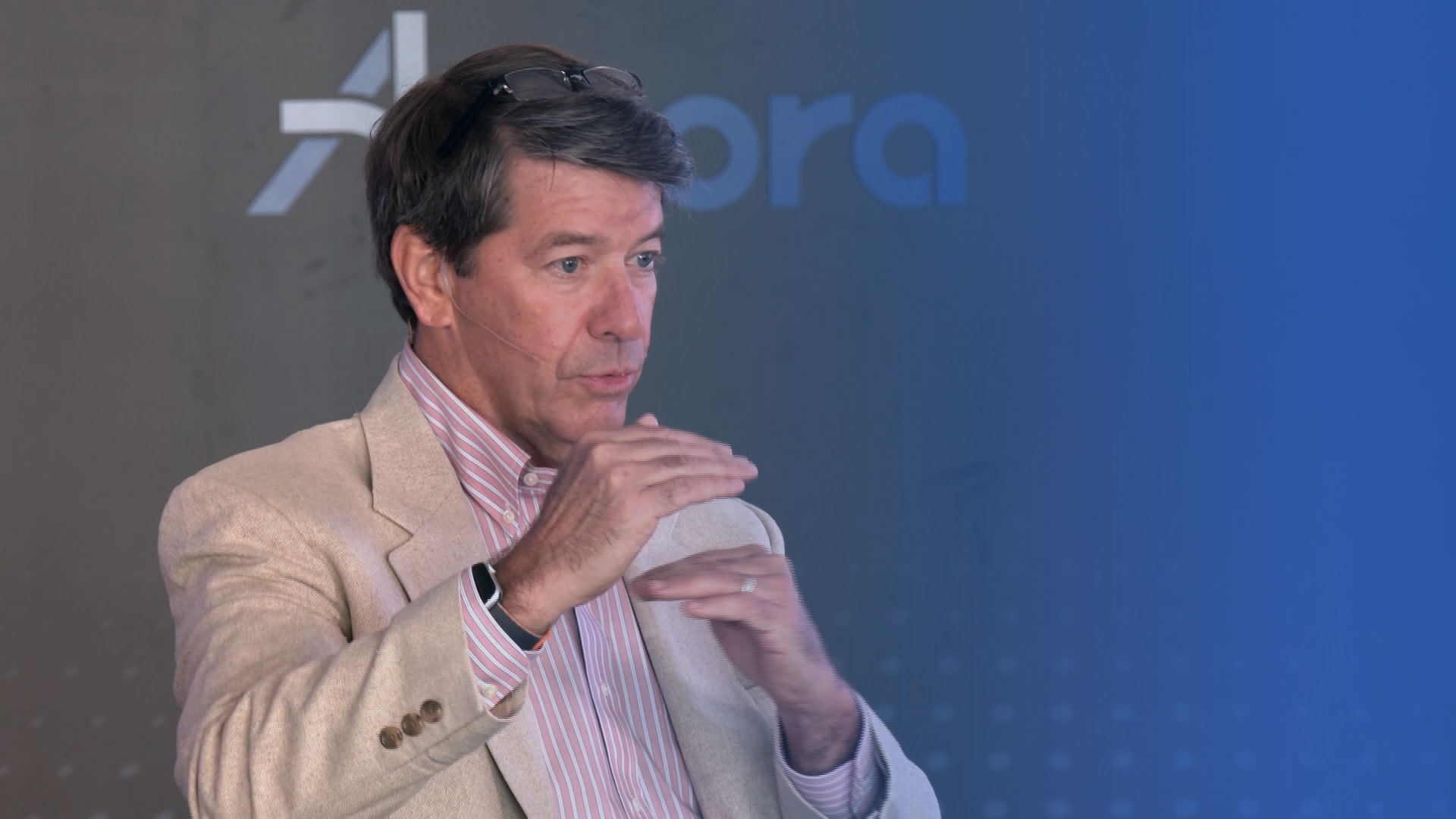
Safety is at the core of everything we do at Aurora—from how we develop our technology to the organization we’ve built and the products we deploy. Helping ensure safe development, operations, and deployment means not just leveraging the leadership of our team, but engaging experts who have shaped the modern transportation safety landscape.
We’re proud to have Dr. Jeff Runge as the Chair of our Safety Advisory Board—the group of transportation leaders outside Aurora who provide an external perspective on our safety approach. Dr. Runge is a former Administrator of the National Highway Traffic Safety Administration (NHTSA), and shares valuable feedback on how we systematically manage, control, and mitigate safety risks.
Aurora Vice President of Safety Nat Beuse recently sat down with Dr. Runge to talk about the importance of strong organizational safety systems and frameworks, as well as how the self-driving industry can build the trust and confidence of the general public. The recording of their conversation is included below alongside an edited excerpt of their discussion:
Nat Beuse: The idea of a Safety Advisory Board was to have a group of outside experts provide guidance and perspective as we build our self-driving technology. Can you share more about your background and why you joined our Safety Advisory Board?
Dr. Runge: I was an emergency room physician working in one of the country’s busiest trauma centers for two decades. My work was in traffic injury control and trauma care and, frankly, I got burnt out because of the revolving door of trauma that kept coming into the emergency department. Road crashes were then the leading cause of injury, and today they’re one of the leading causes of death for Americans between ages two and 34.
The fact that there was not a national crisis declared around auto crashes motivated me to leave my practice and come to NHTSA. There were more than 42,000 annual deaths on the road when I got there, so we introduced some regulations that required new safety technology—namely, electronic stability control and side curtain airbags. And this technology was partially responsible for reducing the number of on-road fatalities and injuries.
I was convinced that technology could be the answer for increased safety, especially in that human behavior is very difficult to change. Because of this, I’ve been very bullish on autonomous driving now for a long time. I don’t care if you’re disabled, you can’t see or hear, or you’re too old or too reckless to drive—autonomy has an answer for this.
The Safety Advisory Board brings expertise in aviation, trucking, road safety, auditing, and more, and we believe that building a strong Safety Case is ultimately what will build a strong business. I joined the Board for that reason and it’s why I’m here today.
Nat Beuse: Other industries have used these kinds of Safety Cases to show safe operations, and at Aurora, we’ve modified this approach for autonomous vehicle development and deployment. Why is a Safety Case so valuable when it comes to delivering a safe product?
Dr. Runge: Sure, and let me define what a Safety Case is. Imagine a long spreadsheet with the first column defining all the ways Aurora is asserting its organization, technology, and products are safe—it’s a long list—then the subsequent columns showing that those safety claims are well supported by evidence. There are milestones in this Safety Case that mean you cannot proceed to the next stage of development until you show how your approach is safe.
This diligent approach instills confidence. When the Safety Advisory Board probes Aurora on safety, we look that these safety claims have been met. At the end of the day, this self-driving technology must be safe if the benefits are going to be attained.
Nat Beuse: That’s right. One of the things we’ve done in our Safety Case is incorporate not just product aspects of safety, but organizational and operational aspects as well. In other safety-critical industries like aviation, we’ve seen strong safety cultures be very powerful in managing risk within a company. We’ve incorporated a Safety Management System into our Safety Case to do so. How do you see this approach playing out?
Dr. Runge: A Safety Management System is an internationally accepted standard for how to manage safety across an organization. Aurora is the first company in the automotive space that I have encountered that actually has fully adopted a Safety Management System or is very, very close.
A Safety Management System has essentially four pillars. First, there’s safety policy—are your policies reflective of safety having a prominent role in your operations? Second is your ability to manage risk and put in countermeasures for risks and hazards. Third is safety assurance, where you evaluate if the actions you’re taking are meeting the mission of the organization and if your risk management procedures are working. And fourth is safety promotion or building a safety management culture—everyone in the organization should identify themselves as responsible for safety.
These systems are required in aviation, and they’ve also spread into maritime and rail. It’s a great methodology to manage safety across your company.
You build public trust with consistency, predictability, and transparency.
Nat Beuse: One of the important parts of the safety case is prioritizing transparency and building public trust, and we work really hard day-in and day-out to explain to the public what we’re doing on safety. Could you talk a little bit about building public confidence in how we approach safety?
Dr. Runge: You build public trust with consistency, predictability, and transparency.
By building the Aurora Driver to be predictable and consistent, you’ll make the on-road environment safer. The transparency piece is one we talk about all the time – you need to be open about what you’re doing to safeguard safety as part of your development and deployment process.
Aurora’s approach to carefully and thoughtfully showing safety is similar to how the FDA approves drugs. A drug company comes in and says here’s what my drug does, here are the benefits and side effects, here are the different phases of the testing we’ve done, and here’s the data to back up our claims. The automobile regulatory scheme we have in place today is simply not as comprehensive as what Aurora is doing.
In implementing this approach, Aurora has taken on a leadership role in your industry, and you’re in a position to drive a positive conversation around autonomous vehicle safety.
*This content has been edited for clarity and brevity.
Related (06)
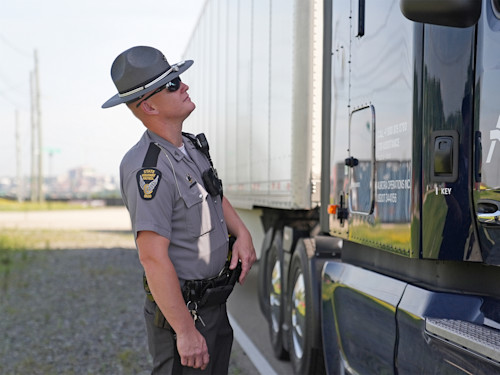
October 27, 2025
Honoring First Responders: Working Together to Keep Our Roads Safe
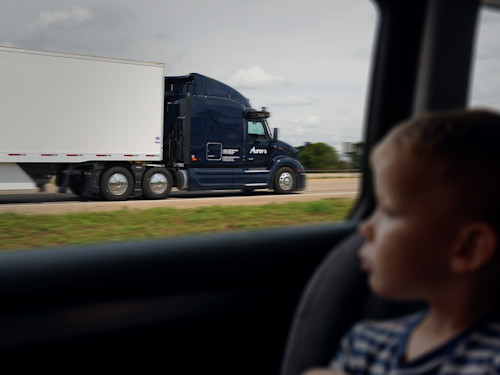
October 22, 2025
Guiding the Industry: Aurora's Expertise Raises the Bar for Safe AV Commercial Operations
October 9, 2025
An Update on Warning Beacons
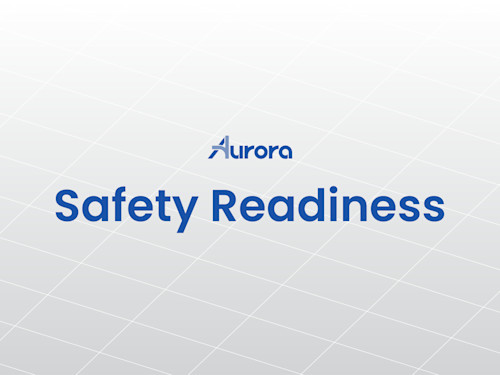
April 10, 2023
Stories from the road: Safety readiness case studies
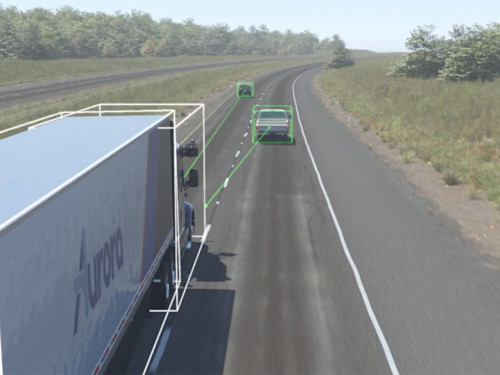
December 18, 2023
Preventing Fatal Collisions: How the Aurora Driver Expects the Unexpected

April 6, 2021